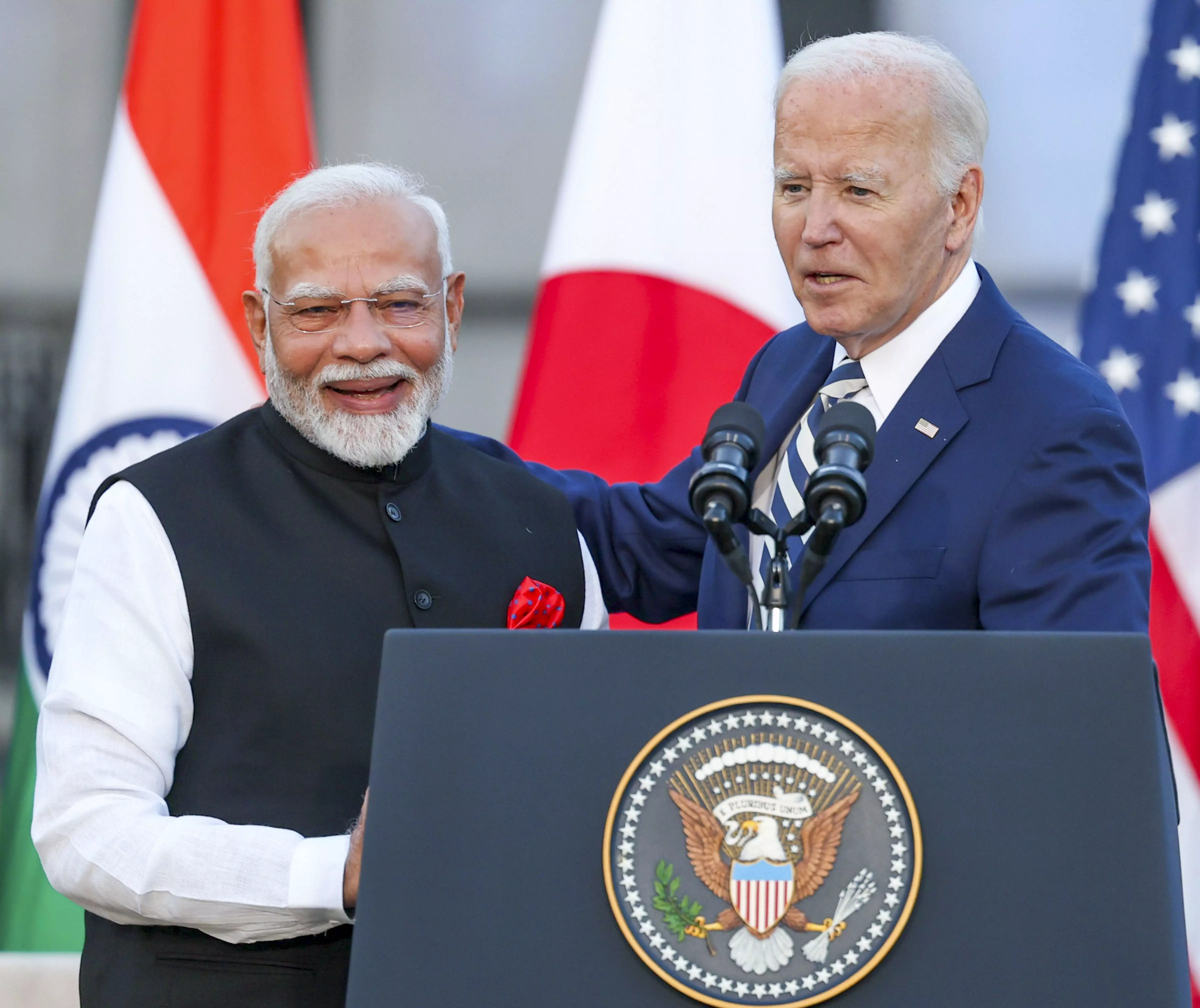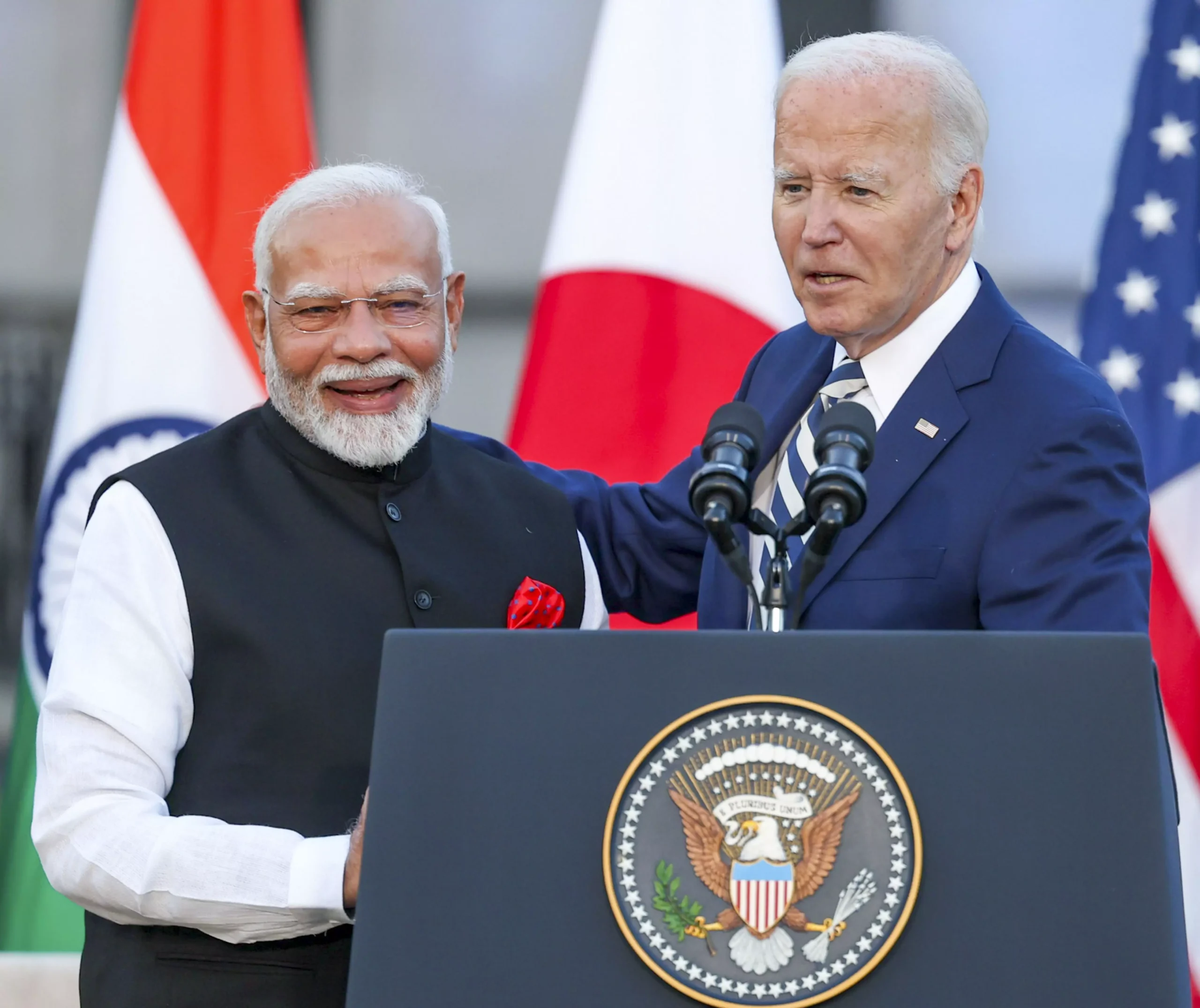
As Prime Minister Narendra Modi completes his ninth visit to the United States since 2014, some striking parallels between his and Pandit Jawaharlal Nehru’s missions to that country become apparent.
As India’s first Prime Minister, Nehru first visited the United States in October-November 1949, at a time when the country was still recovering from its war with Pakistan over Kashmir and when Chairman Mao Zedong had just declared the birth of the People’s Republic of China. India was desperately poor and under-developed at that time and persistent food shortages plagued the land.
“We want food, we want machinery and other capital goods. We do not ask for them as free gifts. We should like to have them on some deferred payment system, on terms of mutual advantage”, Nehru wrote before embarking on his long voyage to the United States. He was well received on his arrival with then US President Harry S. Truman personally welcoming him at the airport. But the visit ended in failure as the Americans wanted Nehru to commit to an anti-Communist, anti-Soviet, anti-China stance and formally side with the Western powers.
Nehru, however, remained adamant on retaining independence in matters of foreign policy, a concept that would later become known as non-alignment. Having seen how imperial powers dragged other countries into devastating wars and other crises, Nehru was convinced that siding with one or the other superpower at a time when the Iron Curtain was descending across Europe would prove ruinous to India. In Washington, he knew his country desperately needed assistance but it could not come at the cost of independence of action on the world stage.
“I was interested in getting such help as was possible in the economic and technical sphere from the United States”, but “there was no deal insofar as I was concerned, either political or economic”, he admitted.
Nehru’s final interaction with the United States was even more dismal. After the disastrous war with China in 1962, he had set aside his pride and begged for military assistance from Washington, particularly fighter jets and radar systems. Sadly, even at that desperate hour, Washington demanded its pound of flesh in exchange.
Specifically, it wanted India to settle with Pakistan on Kashmir and end their disputes. Nehru, weakened and demoralised, acceded to the demand and began negotiations with Pakistan’s military dictator Gen. Ayub Khan, which eventually hit a stonewall as Pakistan wanted most of the Kashmir Valley as well as a large portion of the Jammu region. This Nehru refused to accept, and as a result both the United States and Britain declared their inability to assist India.
By this time Nehru was broken and ailing, he would be dead in a year’s time. Yet, till the very end, he fiercely held on to his belief in India’s destiny as an independent player in world affairs. He believed India could only secure its rightful place in the comity of nations if it maintained her autonomy in both internal and external affairs. His last words to his chief ministers were: “We have a multitude of problems and in effect we fight for our survival not only as an independent country, but also a country with its own individuality, its own basic culture and all that is worthwhile in us. Let us carry on this fight with a stout heart and with goodwill.”
Prime Minister Narendra Modi has been far more successful with the United States than Nehru could ever be. This is to a large part due the tectonic geopolitical changes that have occurred since Nehruvian times. The world today, despite being overshadowed by a global hegemon in the form of the United States, is fast turning multipolar with the rise of China, the re-emergence of Russia and the rise of several smaller powers, including India. The United States and the Western world today are ranged against the China-Russia axis and seek allies all across the world.
Ironically, like Nehru in 1963, Prime Minister Narendra Modi in 2024 too is confronted by a belligerent China, having fought a deadly skirmish in Ladakh’s Galwan Valley in 2020. India seeks military systems and technology from the United States as well as investments in its economy. India’s principal concern today is China and the United States and everybody else in the world is well aware of this. Thus, quite like Nehru, Modi too goes to Washington hat in hand.
The problem is that the United States today, as in the days of Nehru, remains a world power and hegemon, and behaves like one. Subsidiary powers, allies, partners and everybody else in between have to necessarily fall in line with Washington’s overarching strategic aims. There are no free gifts in this world and like Nehru, Mr Modi too will be given a choice: Are you with us or not with us?
India’s closeness with Russia symbolised by Prime Minister Modi hugging President Vladimir Putin has not gone down well in Washington. Even the US ambassador in New Delhi thought it necessary to tick off Mr Modi by declaring that India should “not take this relationship [with the United States] for granted. Enjoy every day of it, pay something into it…” Significantly, the ambassador added: “I respect that India likes its strategic autonomy. But in times of conflict there is no such thing as strategic autonomy.”
In other words, India is being told to make choices and there will be consequences.
Perhaps one such example is the open US support to the anti-Indian regime that has usurped power in neighbouring Bangladesh through a coup. Other not so subtle signals are also emerging: slowdown in deliveries of critical military components such as the GE 404 aircraft engines and systems such as Apache helicopters for the Army. Other technologies such as those for the more advanced GE 414 engines are also to be withheld, and so on.
Today’s India is not the poverty stricken, militarily weak skeletal figure of Nehruvian times. It is the world’s most populous country and is on its way to become the third largest economy in the world. It is also one of the top five global military powers. Yes, it needs cutting edge technology, advanced weapons systems and more factories to absorb its unemployed millions. Denying all this could slow India’s ascent but cannot derail it. The question is: Can India’s present leadership prove as resolute as Pandit Nehru in the face of increasing US demands to end its strategic autonomy?
